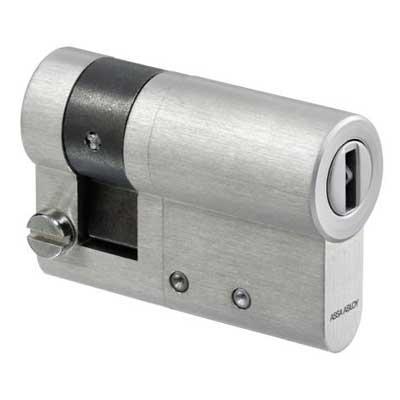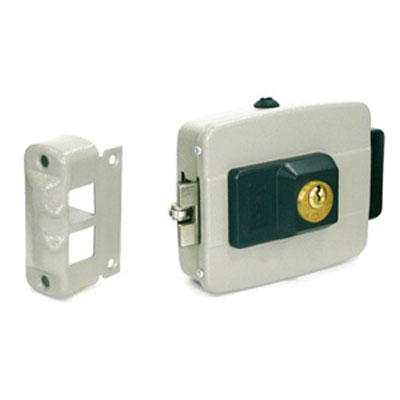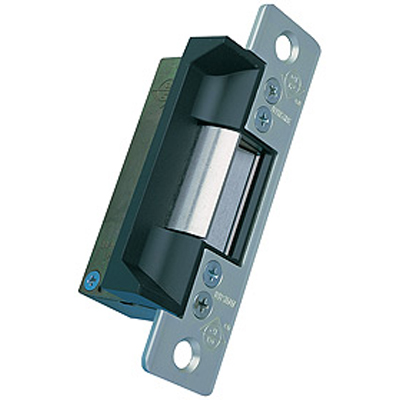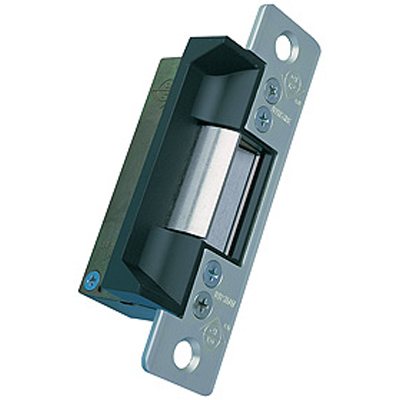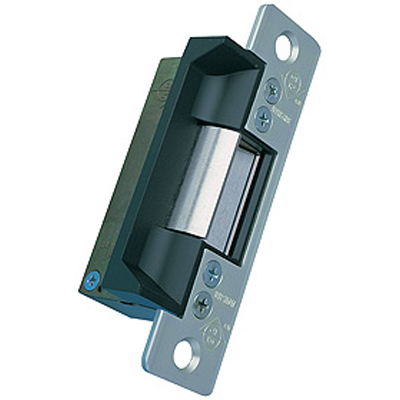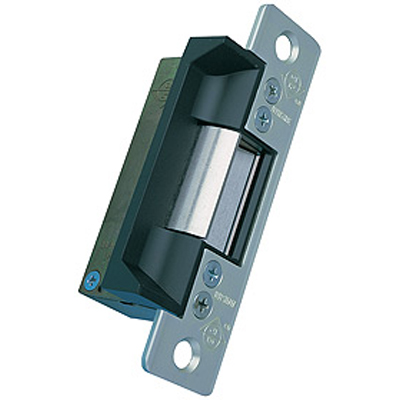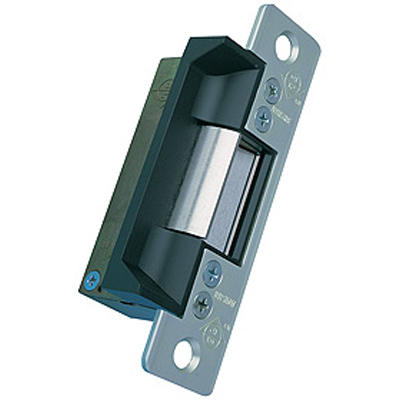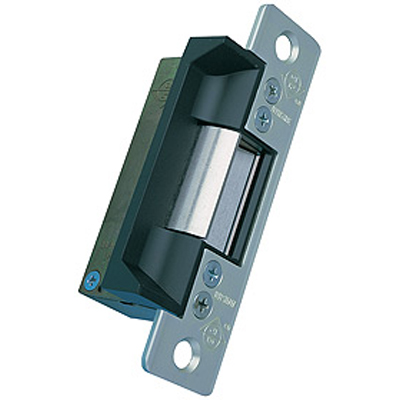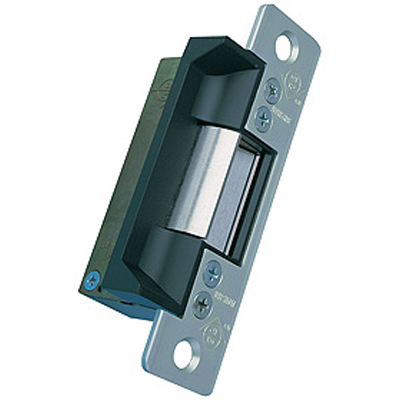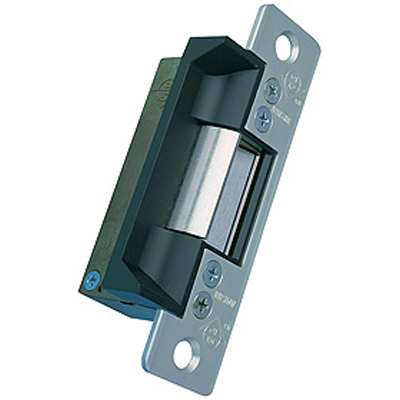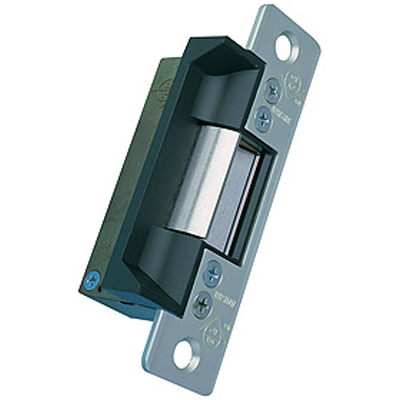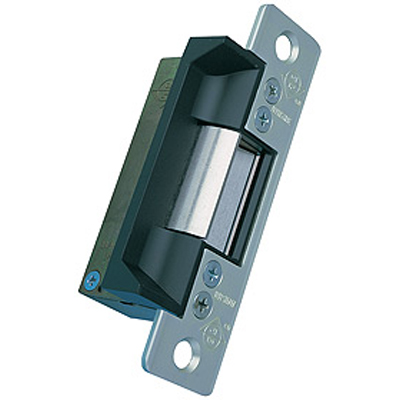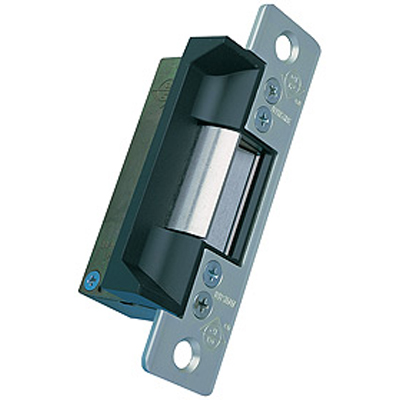Electronic Door Locks & Locking Devices (1,640)

The University of St Andrews, the UK’s top university, aims for net-zero emissions by 2035. With a history since the 1400s, it excels academically and is dedicated to sustainability. To further its green initiatives, the university sought an innovative access control solution that aligns with its goals. Introducing Aperio® Wireless Locks Aperio® battery-powered wireless locks are the perfect fit for the University of St Andrews’ Halls of Residence, installed in approximately 1,693 student bedrooms. These advanced locks provide a seamless integration with the university’s central access control system and student ID cards, streamlining access for all users. Key Features and Benefits: Energy Efficiency: Aperio locks consume zero energy when idle, operating on standard batteries that require changing approximately every two years. This ensures a minimal environmental impact while maintaining cost-effectiveness. Easy Installation: The wireless design allows for quick installation without the need for drilling or extensive alterations to existing doors, significantly reducing energy use during setup. Centralized Management: With online central management capabilities, access rights can be issued or modified in real-time with just a few clicks. This not only simplifies operations for staff but also enhances security across the campus. Environmentally Conscious Manufacturing: Manufactured by ASSA ABLOY, Aperio locks are designed with sustainability in mind, contributing to the university’s goal of reducing its environmental footprint. 24/7 Monitoring and Reporting: The integration with the university’s access control system provides continuous monitoring and reporting capabilities, ensuring security and ease of management. Results in Action The installation of Aperio® Wireless Locks exemplifies the University of St Andrews’ commitment to sustainability. By opting for these energy-efficient solutions, the university not only enhances security but also aligns with its vision for a greener future. Aperio® Wireless Locks are not just a product; they represent a step towards a more sustainable and efficient university environment. Experience the future of access control with Aperio, where security meets sustainability.
Add to Compare
Secure and Manage with eCLIQ eCLIQ helps digitalize and future-proof buildings, addressing individual needs and supporting the transition from mechanical to digital systems. With eCLIQ, users can secure and manage all access points digitally, ensuring the safety of people and assets. It offers convenience, flexibility, and cost-efficiency—bringing peace of mind to everyone. The 4 Elements of the eCLIQ System SoftwareWhether managing a small business with few access points or a larger setup with more people involved, their software solutions simplify system management. Programming DevicesA range of programming devices allows users to configure the system to meet the needs of different users and applications. CylindersA wide variety of battery-free cylinders and padlocks secure all access points, including interior and exterior doors, gates, cabinets, lockers, alarm systems, and more. KeysProgrammable smart keys ensure each user has a key suited to their workflow, with access rights that can be updated instantly as requirements change.
Add to Compare
Access decision is made by the Aperio™ escutcheon based on access data on card – access data are written on card via EAC system updater. It can be used with all European (DIN) mortise locks - in wooden, steel and tubular-frame doors.
Add to Compare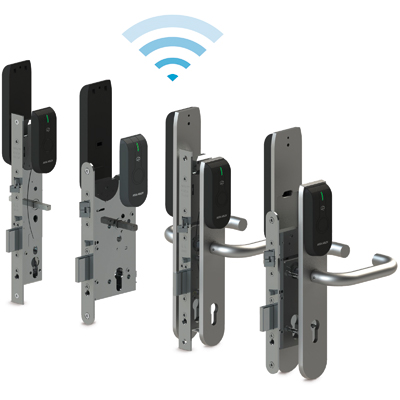
ASSA ABLOY’s Aperio® Technology enables the cost-effective integration of doors with mechanical locks into both new and existing access control systems. Thanks to its innovative wireless technology, integrating doors into an access control system will no longer require extensive wiring or structural alterations in the future. Doors will merely need to be equipped with electronic Aperio® locks with RFID readers and linked to the online access control system via a communications hub. The manufacturer independent architecture of Aperio® provides a convenient way of connecting with most access control systems via RS485, Wiegand, or IP interface. The Aperio® cylinders, escutcheons or locks communicate via an encrypted wireless link to a communication hub that is wired directly to the system. Highlights at a glance Additional doors can be integrated into access control systems at a low cost Update of access authorisations online and in real time Battery powered cylinders, escutcheons and locks with RFID reader functionality Easy to install with no structural alterations or wiring to the door No need to replace the existing RFID cards or transponders as these can also be used for wireless Aperio® doors. Standard RFID technologies are supported (iCLASS®, MIFARE™ Classic and DESFire™, HID PROX/EM410) Open standard, meaning Aperio® can be combined with all access control systems More than 100 global leading access control OEM’s already support Aperio®
Add to Compare
Suitable for single and double action doors (with positive centring door closers). The 1391 can be fitted vertically or horizontally (but not in the threshold) allowing flexibility in installation, and at all times provides a positive fail-safe operation (unless power supply continued during power failure by means of battery back-up).
Add to Compare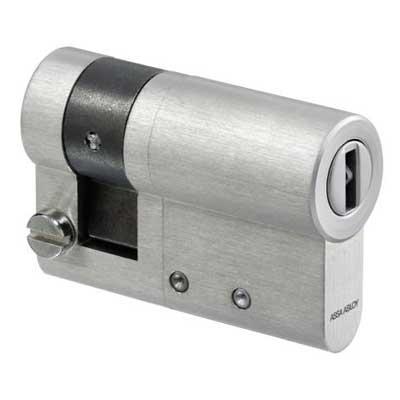
eCLIQ Scan Oval cylinder High-security protection against manipulation and intelligent break-in attempts Integrated microchip for storage of locking - authorisations and event logs Use in environments with demanding ambient conditions Maintenance-free up to 200,000 cycles (includes integrated lubricant reserve) Central key channel and low core overlap for problem-free installation in combination with security fittings and other locks Emergency mechanism with user key
Add to Compare
People come and go through our buildings like never before. Are they safe? Are premises and their valuable contents secure? To meet this challenge in the 21st century, businesses need more than a key. Mechanical security was designed for a different era. Once issued, a metal key is out there forever. Even the best-managed mechanical key systems have worry and uncertainty built-in — because it is almost impossible to track who is using a key and when. Is such a static access system a future-proofed solution for a growing business? If a mechanical key goes missing, there’s a risk to premises which often can only be fixed by changing locks. This is expensive for organizations and time-consuming for facility managers, especially when a master-key goes missing. Programmable electronic keys are a more efficient, streamlined solution which bring control, security and peace of mind. How programmable keys help a typical facility manager work smarter Intelligent keys put the powerful features of electronic access control into a convenient technology. They have the advantages of traditional lock-and-key security: familiar and user-friendly. But they have evolved. Using these keys remains as simple as ever. The holder simply turns it in a cylinder. The important difference is that every unlocking decision is made electronically — and logged — by the software. Security teams will discover that audit trails generated by these logs can simplify incident investigation. This type of electronic locking solution further minimizes risk because keys can be blacklisted if lost, without needing to change the locks. Using companion software, facility teams can manage everyone’s access from anywhere, at any time. Over 100 years of ASSA ABLOY Group expertise in lock and key technologies went into creating, enhancing and patenting an innovative electronic key technology. Their eCLIQ system is based on wireless locking devices and programmable keys. Easy to install and straightforward to run, it simplifies security for premises of every size and type. The key advantages of eCLIQ With eCLIQ, every facility manager gets to decide who goes where and when, because they issue individual access for each site user. Once issued, keys are always under control. They can be programmed and reprogrammed anytime using the companion software and a range of programming devices. Both installation and operation are simple. To fit, an installer swaps out the mechanical cylinder for an eCLIQ cylinder. There is no wiring or drilling. A standard battery inside each programmable key powers the cylinder or padlock. Because eCLIQ keys are powered by batteries with a typical lifetime of 10 years, they can bring reliable electronic access control anywhere — far beyond the reach of wired locking. Thanks to multiple software options, security staff manage user access rights in their preferred way. Authorized key-holders also enjoy the convenience: Everyone carries a single, key programmed with only their cleared access permissions. They no longer carry bulging keyrings or waste time hunting down the right key for the job. Configuration in 3 simple steps It is straightforward to design and deploy an eCLIQ system that’s right for each individual location. First, choose from a range of cylinders and padlocks; there’s an eCLIQ device for almost any opening: interior and exterior doors, gates, cabinets, lockers, vending machines, alarm housing and more. Second, issue every authorized employee or contractor with the right key for the job. All keys work together seamlessly in any eCLIQ system; each is protected against climate, dirt and dust (IP67). The battery is standard and has a typical lifetime of 10 years. Finally, a choice of easy software options can tailor system management to the exact needs of the business. “Unlike traditional electronic access control systems, eCLIQ uses no mains electricity,” says Stephan Schulz, CLIQ Product Manager at ASSA ABLOY Opening Solutions EMEIA. “Relying on energy-efficient battery power minimizes disruption when making the switch to eCLIQ. Because no cabling is required around the door, there’s no need to schedule, or pay for invasive electrical wiring at installation stage.” Easy administration with a choice of software options Managing eCLIQ is equally straightforward. Keys are programmed with the easy-to-use software, with a choice between local software installation (CLIQ Local Manager) or web-based software (CLIQ Web Manager). The CLIQ Web Manager administers keys and users securely online. It takes multiple administrators and multiple sites in its stride, and can run in a self-hosted IT environment or with a choice of Software as a Service (SaaS) packages. It offers optional integration capability with many types of business management software, helping to automate tedious operations and processes to boost efficiency. The redesigned eCLIQ Wall Programming Device also makes it easier than ever for facility managers to require staff to revalidate keys regularly — the least disruptive way to increase site security. Because the updating process is fast and easy for keyholders, managers have the peace of mind that every key in circulation is loaded with the latest approved permissions. For access at smaller, single-site premises, CLIQ Local Manager (CLM) software can be installed on a single PC. It manages up to 3,000 locking cylinders; keys are currently updated via a desktop programmer but soon CLM Remote will offer remote updating via wall-mounted devices, too. Operating either version of the eCLIQ software is intuitive: “The programming software platform is very simple to use. We can easily grant or forbid access rights to any user,” confirms Laurent Schutz, Water and Sanitation Process Manager at O des Aravis in France, where CLIQ technology helps keep remote mountain communities supplied with clean drinking water. However the eCLIQ system is managed, missing keys are quickly de-authorized, cutting risks associated with loss or theft. At any time, facility managers can generate an audit trail to find out who has accessed which locks. Low-maintenance devices that facility managers trust The eCLIQ device range can filter entry through doors and many other openings. Robust, durable cylinders and padlocks in multiple sizes and formats can protect lifts, server racks, furniture, gates, mailboxes and cabinets with the same level of control as sensitive doors. Cylinders operate safely between -25°C and 85°C. Waterproof padlocks work outdoors in almost any environment, however harsh. Cylinders and keys meet ATEX standards, so can be deployed in potentially explosive environments. An integrated lubricant reservoir keeps these devices maintenance-free for 200,000 cycles, with typical use — another cost-efficiency benefit. The keys are equally durable, compact, and waterproof (IP67). They are easy to program, enabling temporary and time-limited access permissions for every employee or contractor. When a key’s standard battery runs low, it is easy to replace without tools — although, given the typical battery lifetime of 10 years, most keyholders will never need to. How one city runs a flexible, intelligent locking system with eCLIQ To deliver services effectively, public institutions need more than just innovation and accountability. They require flexibility and agility, too, including in how they approach security. Security challenges for public services and public spaces do not stand still: Here, filtering access intelligently and dynamically has become part of security’s job description. For this reason, Vincennes city administrators sought a modern, electronic replacement for a master-key system with almost 4,000 keys. Several locations around Vincennes — among them schools, childcare centres and the Town Hall — relied on this complex locking solution. Mechanical security did not have the flexibility to adapt: The costs and risk when keys went missing were a growing burden. Vincennes officials tasked their city security director with finding a more responsive solution: An electronic locking system which is easy to install; does not require power to be cabled to every lock; and helps municipal staff to tailor access rights for different people, to trace keyholder and lock interactions and to amend or revoke permissions when required. They also needed an established, trusted security partner able to offer training and system support. “A wired access control system was rejected because it required too much work to bring the power to each door,” says Fabrice Pain, Director at Vincennes’ Municipal Technical Centre. “Now eCLIQ provides us access control without wiring at all.” Interior and exterior doors at buildings including the Hôtel de Ville, 11 nurseries and 12 schools are equipped with electronic eCLIQ cylinders. Rather than 4,000 static mechanical keys, 1,000 intelligent eCLIQ keys have been issued to staff. Efficient hospital security management with electronic key security In hospitals, managers are responsible for ensuring that access to sensitive medicines or equipment is tightly controlled. A programmable key solution enables them to create personalized access schedules — even for temporary contractors — and collect audit trails automatically. Staff travel into, out of and through the hospital based on rules programmed into their keys. At University Hospital Frankfurt 1,100 eCLIQ cylinders secure doors in a new building. CLIQ Web Manager software makes it easy to program, reprogram and audit every key, cylinder or padlock. Because the Web Manager interface is accessible from anywhere — via multifactor login over a secure internet connection — staff manage access whenever and from wherever they choose. Security working to improve health and safety At Hydreaulys, a French water and waste management utility, a simple switch to programmable key-based access control helped them make improvements in both security and staff health and safety. Complex workflow challenges throughout the utilities sector can push static master-key systems beyond their limit. To upgrade their mechanical locking system, the Hydreaulys facilities team prioritized access control technology which was already trusted in the sector — and supplied by a leading global manufacturer with deep industry expertise. Quality guidelines laid down by the utility’s Group Risk Manager were stringent: Alongside filtering access, the locking system should ensure only those with clearance gain access to potentially hazardous materials. Safety and security go hand in hand. The solution was eCLIQ. Programmable cylinders and padlocks are wire-free, so swapping existing mechanical locking for eCLIQ devices was quick. Installation did not require any cabling. As a result, security and site safety are improved, because unauthorized staff are kept away from dangerous materials. Now, no one can handle risky products without authorization, which is programmed on their personal eCLIQ key and changed whenever needed. Secure system management via the CLIQ Web Manager puts Hydreaulys’ security managers in total control of access: They can filter by building, zone, function or time period. “Access control needs flexibility as our organization and management of the site is evolving, and the reliable eCLIQ system is evolving with us,” says Jean-Pascal Chuzel, Deputy Agency Director at Water France – Paris Seine Ouest.
Add to Compare
Access control should not stop at doors: In shared spaces, valuables and other personal items deserve the same protection as offices, treatment rooms or server racks. Many access solutions are limited to the door environment. This is where the new Aperio KL100 comes in: It integrates seamlessly with more than 100 access control systems, bringing security to many access points beyond just doors. Managing the security of additional access points outside a security system increases risk, complexity and workload. The battery-powered Aperio KL100 solves this problem. It secures lockers, cabinets, cupboards, drawers. Almost any small opening quickly becomes an integral part of an access control system. An Aperio KL100 fitted at these points gives personal valuables, medicines, sensitive documents, retail stock, sports kit and more the security they deserve. It deters unauthorized access and theft. With two different lengths and several CAM options, the KL100 is a straightforward retrofit solution. It suits almost any locker, cabinet or drawer, whether wooden or metal. Powered by one battery, this wireless lock consumes very little power — it only “wakes up” when a credential is presented — and needs no specialist maintenance. In line with every device in the Aperio range of battery-powered locks, this protection does not require the hassle or inflexibility of physical keys. An Aperio KL100 can be operated with mobile keys via Bluetooth Low Energy and NFC, as well as smartcards and fobs using all major RFID technologies. For added user convenience, the device accepts multiple credential technologies simultaneously, in parallel, so security managers can roll out mobile keys at their own pace. Easy hardware integration for greater efficiency and convenienceThe Aperio KL100 is designed for minimal disruption to furniture. A tiny footprint and wire-free operation ensure it’s fitted quickly without causing damage or visual impact. Yet within this small package is a powerful device which integrates seamlessly with any new or existing access control and security system — from over 100 different manufacturers and counting. Existing user credentials do not need to be replaced. A KL100 may be connected Online, Offline or via OSS compliant integration — and switched between them at any time. Online management enables real-time control over every KL100 lock, with easy access rights administration and instant availability of audit trails for any opening or user — which makes incident investigation fast and accurate. The Aperio KL100 Locker and Cabinet Lock joins a family of trusted wireless, battery-powered devices which includes cylinders, escutcheons, handles, security locks, server rack locks and more. With its contemporary, low-profile design and power provided by a single, standard lithium battery, the KL100 is the modern choice for securing any site’s valuables and sensitive small spaces.
Add to Compare
Your electronic security could save you money at every stage of its life-cycle — if you pick the right locks Installation, operation and expansion: electronic access control has costs attached to every stage of its lifetime. Of course, the benefits over mechanical locking outweigh these costs. And they could outweigh them even farther, if you choose the right locking technology: wireless. Installation is where it all begins. Installation stage is also the largest contributor to the potential cost saving in choosing wireless. In calculations for a recent cost savings report, ASSA ABLOY experts examined likely costs of a 100-door installation. Labour cost savings for those who chose wireless versus wired locks were a staggering 82.5%*. Yes, you read that right. Installing battery-powered locks versus wired locks would save you over 80% in the labour cost of specialist access control installers. Wireless installation is much faster; it is also less intrusive. Leading wireless locks require little or no drilling around the door, whereas wired access control needs cabling through and partly around the door. You can upgrade building security without inconveniencing your staff or disturbing everyday work routines. Energy savings can contribute to business sustainability goals According to the Harvard Business Review, energy efficiency has become one of the “key levers for business success”**. Battery powered wireless locks use less energy than traditional wired locks, which normally work via magnets connected permanently to electricity. Wireless locks work differently. They only “wake up” when presented with a credential for which they must make an access decision. This translates into another potentially large saving on your annual energy budget: more than 70%*, or thousands of euros over a typical access control installation’s lifetime. Other related energy and material costs are also lower for wireless locks. During operation, wireless locks require just a battery change — once every two years (approximately). Wireless locks also provide more flexibility — and can reduce costs — when you reconfigure or expand office space. High-quality wireless locks can typically be reinstalled at another door without impacting their reliability. You can move them to wherever is convenient. Typical cost savings on your next office relocation or expansion are around 30%* with wireless over wired locking. Choosing cost-saving wireless locks Aperio® wireless locks can save you money at every stage of their life-cycle. Battery-powered Aperio® RFID-equipped cylinders, escutcheons, handles and locks can be fitted as a new access control system or extend an existing installation by linking new doors to the same system wirelessly. There’s no need for staff to swap their key-cards, nor for anyone to carry more than one credential. They work seamlessly within almost every major access control system on the market, from over 100 different manufacturers. One control panel manages everything — Aperio®and legacy locks. Installion is quick, because there’s no cabling around the door, no invasive building work, and no need to change door hardware. Aperio® devices fit almost any opening or security level, exterior and interior doors — wood, glass or aluminium — from fire and escape doors to meeting rooms, labs and offices. To find out how much you could save by making the switch to wireless locks, you can download a free screen paper with project cost calculations at: https://campaigns.assaabloyopeningsolutions.eu/aperio-cost-savings *: ASSA ABLOY in-house calculations. See report: https://campaigns.assaabloyopeningsolutions.eu/hubfs/AA_Aperio_CostSavings_Solutionguide_07_2020_ENG_EMEA.pdf **: https://hbr.org/2017/01/energy-strategy-for-the-c-suite
Add to Compare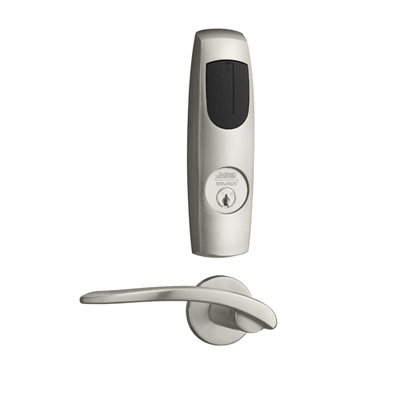
Corbin Russwin Access 600 RNE1 seamlessly integrates a full range of locks into your Wiegand Access Control System – from mortise locks to cylindrical locks and exit devices – all Grade 1 Corbin Russwin hardware. Customised monitoring options, wide range of quality hardware and easy system expansion define the advantages of the Access 600.
Add to Compare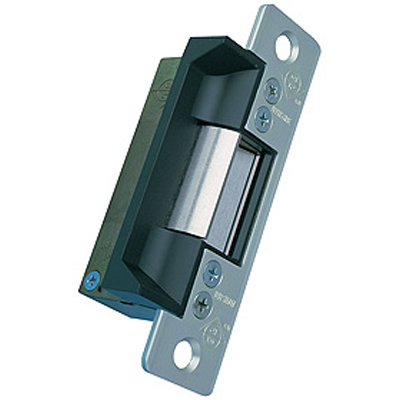
Electrical actuation unlocks the strike jaw, releasing the latchbolt so the door can be opened without operating the latch itself. The compact mechanism fits into a jamb section as shallow as 44.55mm. The design of the steel wraparound faceplate helps provide additional protection to the timber door frame in the area of the electric strike. The subcover is flush with the outer face of the steel faceplate and is therefore ideal in situations where a ‘T-Bar' protection strip is fitted.
Add to Compare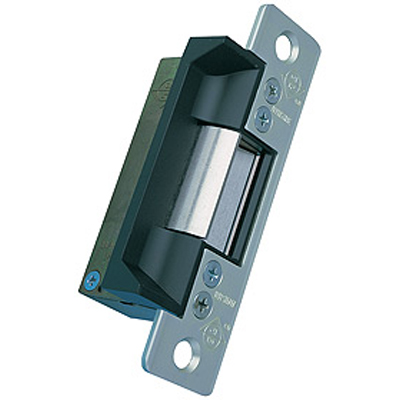
Electrical actuation unlocks the strike jaw, releasing the latchbolt so the door can be opened without operating the latch itself. The compact mechanism fits into a jamb section as shallow as 44.55mm. The design of the steel wraparound faceplate helps provide additional protection to the timber door frame in the area of the electric strike. The subcover is flush with the outer face of the steel faceplate and is therefore ideal in situations where a ‘T-Bar' protection strip is fitted.
Add to Compare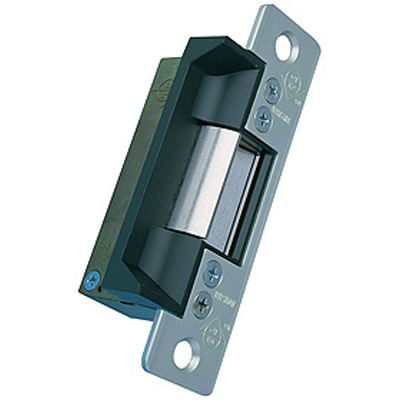
Electrical actuation unlocks the strike jaw, releasing the latchbolt so the door can be opened without operating the latch itself. The compact mechanism fits into a jamb section as shallow as 44.55mm. The design of the steel wraparound faceplate helps provide additional protection to the timber door frame in the area of the electric strike. The subcover is flush with the outer face of the steel faceplate and is therefore ideal in situations where a ‘T-Bar' protection strip is fitted.
Add to Compare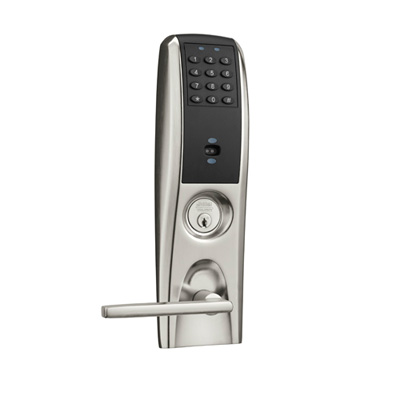
Keep track of who enters and exits your facility doors with the Access 800® AC2. This stand-alone access control product allows you to program each of your locking hardware devices by simply using a PDA data transfer. You can update your locks quickly and efficiently using Corbin Russwin’s broad selection of technologies and new programming features with ANSI/ BHMA Grade 1 mechanical locks, housed in a sleek contemporary design.
Add to Compare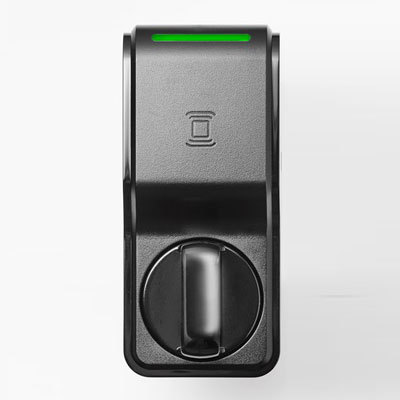
For use with swinging and sliding cabinet doors and drawers with a door thickness of up to 2-1/4” Supports HID multiCLASS SE® contactless credentials. Uses local wireless communication between the lock and an Aperio hub to bring access control to cabinet doors and drawers where audit trail and real-time monitoring are required. K100 cabinet lock comes standard with locked state & tamper monitoring, optional mechanical key override and over 150 lbs of holding force.
Add to Compare
Electrical actuation unlocks the strike jaw, releasing the latchbolt so the door can be opened without operating the latch itself. The compact mechanism fits into a jamb section as shallow as 44.55mm. The design of the steel wraparound faceplate helps provide additional protection to the timber door frame in the area of the electric strike. The subcover is flush with the outer face of the steel faceplate and is therefore ideal in situations where a ‘T-Bar' protection strip is fitted.
Add to Compare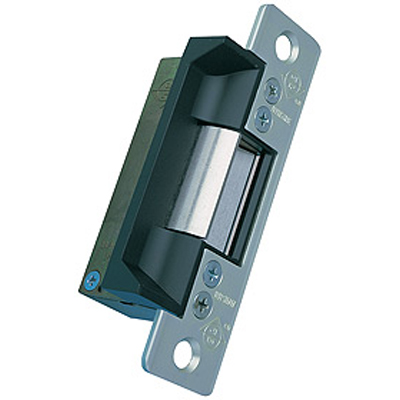
For remote access control of any timber or steel door equipped with Adams Rite 4700 series (or similar) deadlatch. Electrical actuation unlocks the strike jaw, releasing the latchbolt so the door can be opened without operating the latch itself. The compact mechanism fits into a timber or steel jamb section as shallow as 44.45mm.
Add to Compare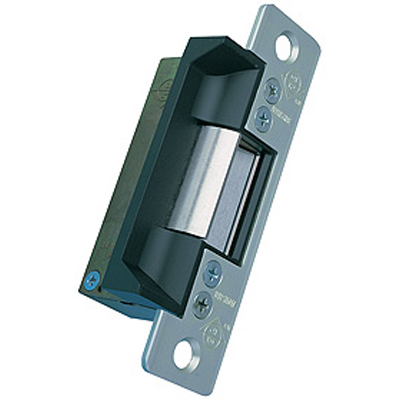
For remote access control of any steel door equipped with Adams Rite 4700 Series (or similar) deadlatches. Electrical actuation unlocks the strike jaw, releasing the latchbolt so the door can be opened without operating the latch itself. The compact mechanism fits into a jamb section as shallow as 44.45mm.
Add to Compare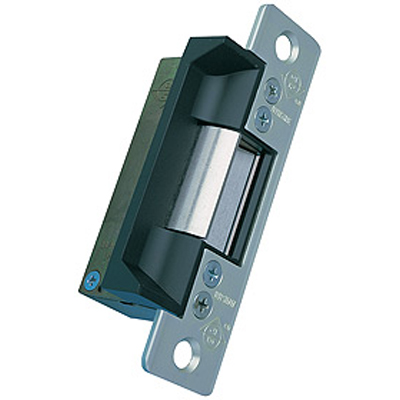
For remote access control of any steel door equipped with Adams Rite 4700 Series (or similar) deadlatches. Electrical actuation unlocks the strike jaw, releasing the latchbolt so the door can be opened without operating the latch itself. The compact mechanism fits into a jamb section as shallow as 44.45mm.
Add to Compare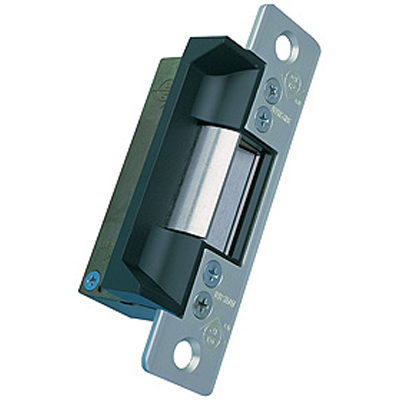
For remote access control of any steel door equipped with Adams Rite 4700 Series (or similar) deadlatches. Electrical actuation unlocks the strike jaw, releasing the latchbolt so the door can be opened without operating the latch itself. The compact mechanism fits into a jamb section as shallow as 44.45mm.
Add to Compare